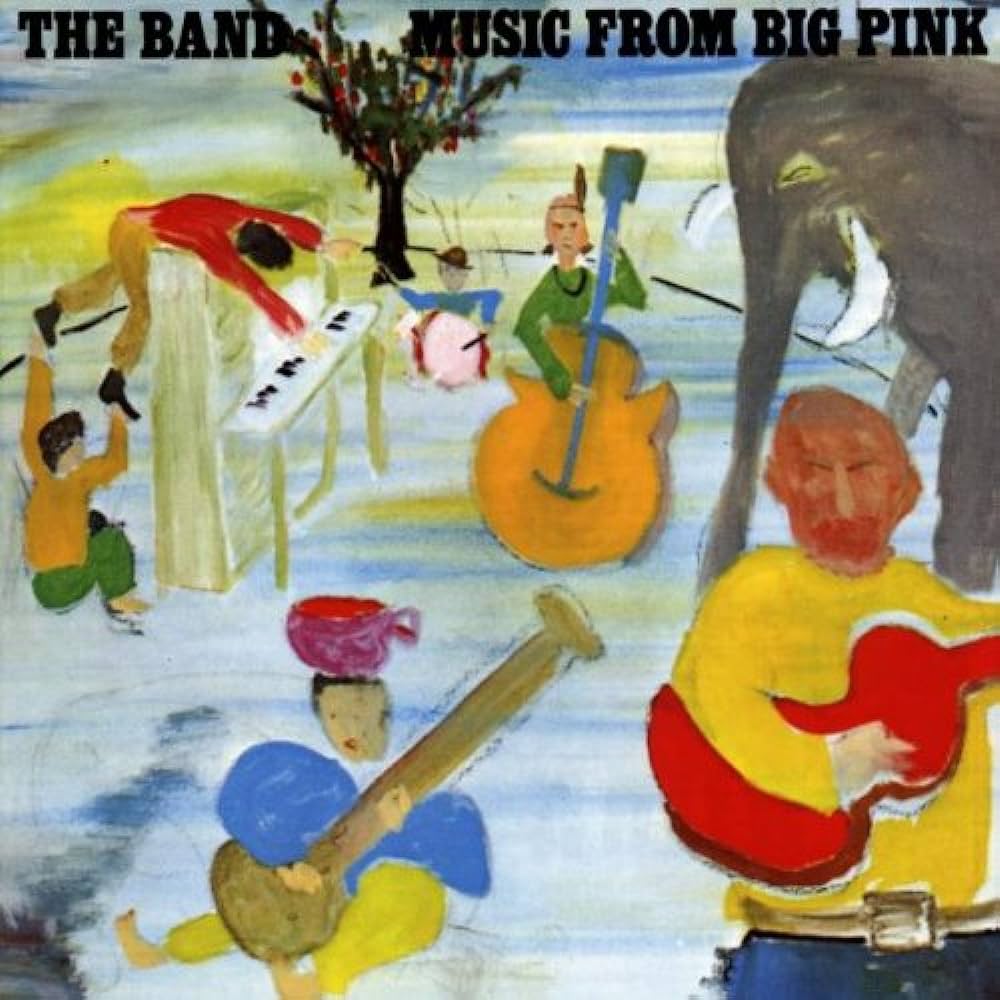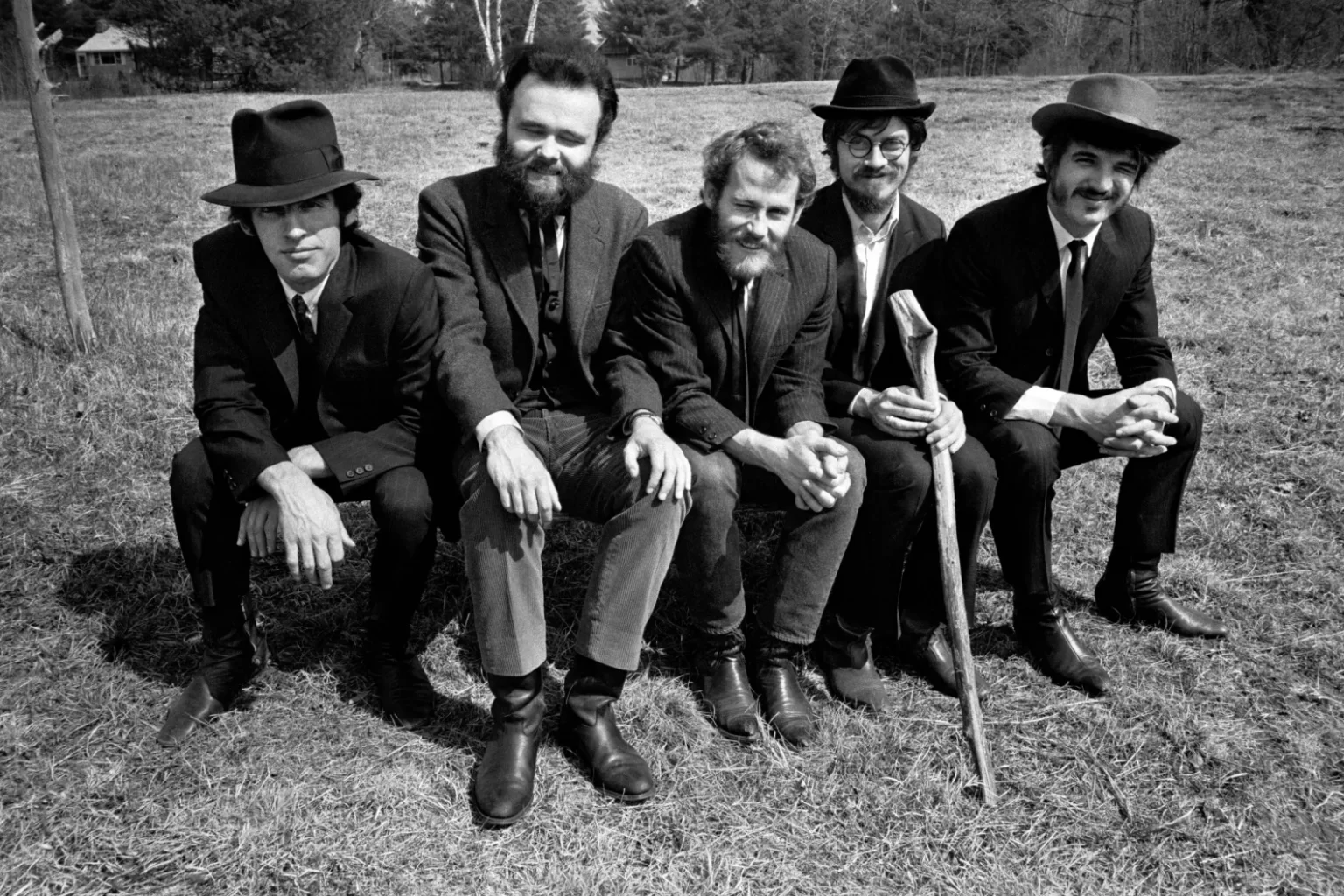This is the fifth in a series of articles about the Folk Americana Roots Hall of Fame’s (FARHOF) inaugural class of inductees. The first induction ceremonies will take place in April although an exact date has not yet been announced. This is the last article to focus on the Duo or Group of Musicians category. This category recognizes performers whose initial impact on the genre was at least 25 years prior to the year of Induction.
Four Canadians and a Southerner from Elaine, Arkansas, came together as a backing band for rockabilly singer Ronnie Hawkins, and for a time were known as The Hawks. Later, they were better known as The Band and from 1968 through 1975 they were one of the most popular and influential groups in the world.
Ostensibly a rock band, influences of country, folk, jazz, and other forms of American roots music were brought together in their work in a way that had a fresh sound in an era of psychedelic sound. Their influence and innovation can be found in the works of Elton John, the Grateful Dead, the Eagles, Wilco, and others.
The Canadians – Robbie Robertson, Rick Danko, Richard Manuel, and Garth Hudson – and the Southerner, Levon Helm, were Hawkins’ backing band from 1958 until they set out on their own in 1963. By then, they had honed their craft so well that they outgrew Hawkins and his music.
Robertson years later would say Hawkins “… shot himself in the foot, really, bless his heart, by sharpening us into such a crackerjack band that we had to go on out into the world, because we knew what his vision was for himself, and we were all younger and more ambitious musically.” Hawkins’ strict rules also played a part. The band grew tired of fines for smoking pot and having girlfriends show up at gigs.
Hawkins’ loss was the music world’s gain. The group performed under various names before Bob Dylan hired them for U.S. tour in 1965 and world tour in 1966. The group considered themselves a rock and rhythm and blues band. They knew Dylan as an acoustic folk artist but did not realize how internationally popular he had become. What they did know was that working with Dylan would give them a wider exposure.
Touring as Bob Dylan and the Band, they did not anticipate the negative reception they would receive. Dylan had gone electric, one of the reasons he hired the group. And folk music purists were unforgiving. Helm was so put off by the negative reception he left the tour after one month. He rejoined the group in 1967 after spending the intervening months working on an oil rig in the Gulf of Mexico.
It was in 1967 the group moved to Saugerties, NY, close to Dylan’s home in Woodstock. Dank, Manuel, and Hudson took up residence in the house that became known as Big Pink because of its pink exterior. The house, which is now available as a rental on VRBO, is where Dylan’s “Basement Tapes” were recorded and where the band wrote the songs for their debut album, Music From Big Pink.

Albert Grossman had assumed management duties for the group and had secured a recording contract for them with Capitol Records. What they did not have yet was a name. They thought of calling themselves “The Honkies” or “The Crackers.” Indeed, for a time before they began working with Dylan one of the names they used was Levon and the Crackers.
Capitol Records was not enamored of the names, and in the end the band became The Band. Robbie Robertson recalled that during their time with Dylan everyone just referred to them as “the band” and the name stuck. Initially they disliked the moniker, but eventually they grew to like it, thinking it both humble and presumptuous.
Music From Big Pink was critically acclaimed. Most of the songs were written by Robertson and Manuel, but “I Shall Be Released,” “Tears Of Rage,” and “This Wheel’s On Fire” were written or co-written by Dylan. Robertson’s “The Weight” was the Band’s first entry into the music charts topping out at #63. It later gained popularity and is now one of their best-known songs. The Rock and Roll Hall of Fame has named it one of the “500 Songs That Shaped Rock and Roll.” Many consider “The Weight” an essential part of the American songbook, noting its enduring popularity.
Of course, by the time Music From Big Pink was released The Band had evolved musically beyond their rockabilly roots learned from Hawkins and the folk influence of Dylan. One can hear Americana, folk, rock, jazz, country, and R&B music in The Band’s songs. Their innovation and experimentation continued through their next two albums, The Band and Stage Fright.
It was around this time internal tensions and disillusionment set in. Robertson took more control of the Band’s music and direction leading Helm, at least, to accuse the former of authoritarianism. Robertson, for his part, claimed his efforts in guiding the group were necessary because Danko, Helm, and Manuel were becoming more unreliable due to heroin usage.
The Band would continue to forge ahead with new albums until 1977. Islands was the last new full-length album the original five members ever made. It was released largely to fulfill a 10 LP contractual obligation to Capitol Records. Robertson had grown weary of traveling and had already convinced Helm, Danko, Manuel, and Hudson to retire from live performances.
The final concert by the original members of The Band took place on Thanksgiving Day, November 25, 1976. It was filmed by filmmaker Martin Scorsese, a friend of Robertson’s. Entitled The Last Waltz, it is one of the best music films ever made.
Danko, Helm, Hudson, and Manuel would get back together and begin touring without Robertson in 1983. They were no longer the headliners they once were and personal demons followed them.
Richard Manuel, aged 42, hung himself in his motel room after a performance on March 4, 1986. He had been clean and sober since 1978 but recently had begun drinking and using drugs again. The Band broke up for good following the death of Rick Danko on December 10, 1999. He died in his sleep at age 55. Levon Helm died at age 71 from complications of throat cancer on April 19, 2012, at Memorial Sloan Kettering Cancer Center in New York City.
Robbie Robertson passed away from a long illness on August 9, 2023, aged 80. He most recently had provided music for another Scorcese film, Killers Of The Flower Moon.
As of this writing, Garth Hudson is 86 and living in a care facility in upstate New York. He was the most proficient musician of the group when he joined Ronnie Hawkins’ Hawks. One of the conditions Hudson insisted on before joining the Hawks was that he be paid to give everyone else music lessons.
The Band’s time at the top was brief but their influence remains. “The Weight,” “Cripple Creek,” and “The Night They Drove Old Dixie Down” are still among the best-known examples of American root music today.


